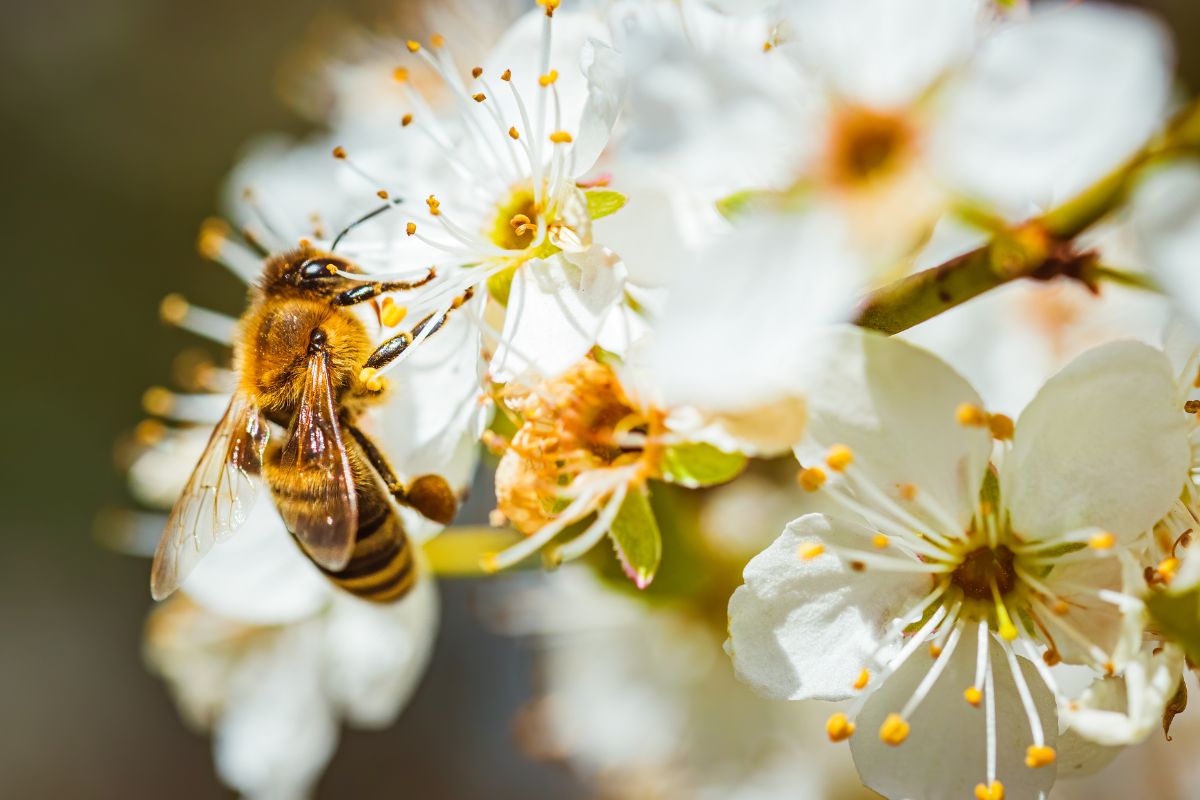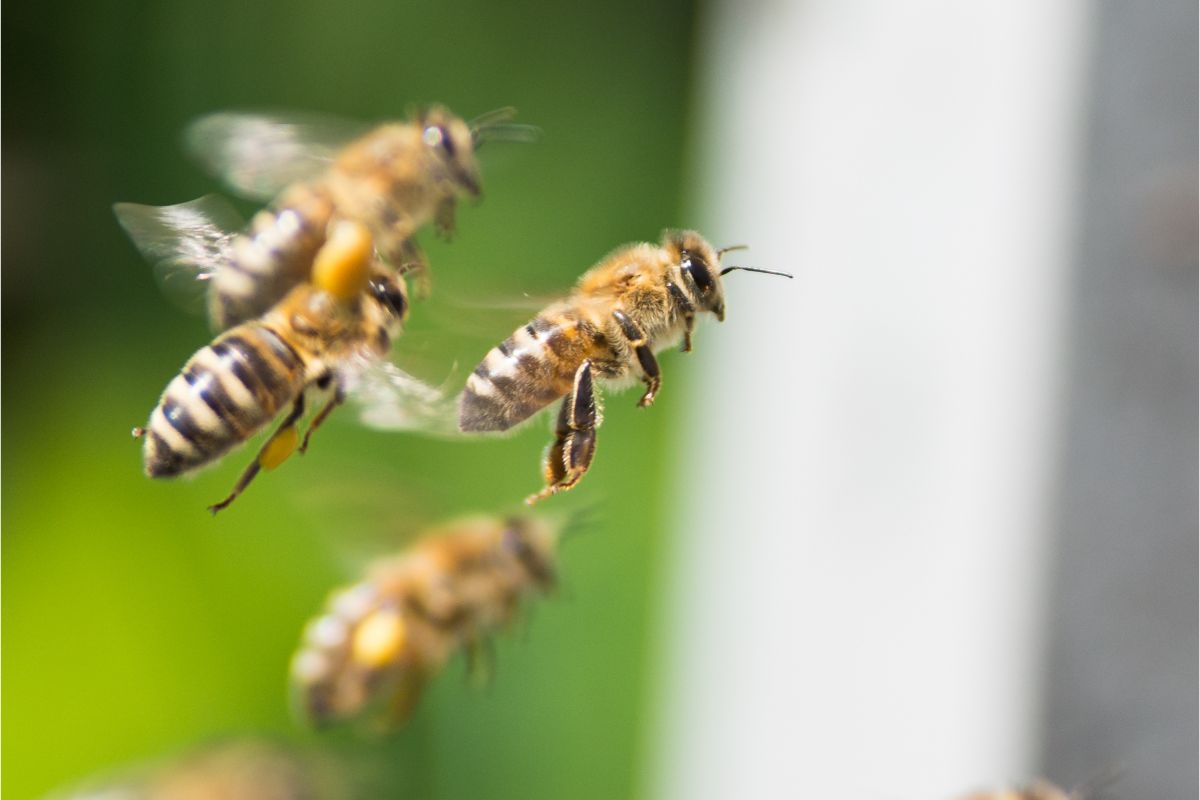You may have heard a few things about bees through the grapevine, such as the prowess of the Queen bee, and that male bees die after mating.

We are here to clear it all up and give you the facts about bee reproduction!
Honey bee reproduction is not as straightforward as it would seem, and you may be surprised at how complex the whole process is.
Honey bees are found in two sexes, male and female, and only around 1% of all female bees will reproduce.
Do All Bees Reproduce?
Not all honey bees will reproduce. Around 99% of female bees actually do not reproduce at all. The reproduction process is only possible when the Queen bee and a male bee in a hive mate.
Within a hive, there are three different kinds of bees. These are drone bees, worker bees, and the Queen bee(see also: How To Identify A Queen Bee). The drone bees are the male bees, which have their own reproductive systems hidden within their bodies.
Then, you have the worker bees, which are female bees. They also have a reproductive system, with ovaries, but these remain dormant and they will likely not ever develop eggs.
Queen bees are the ones that reproduce, and populate the hives.
The Queen bee’s reproductive system has working ovaries, so once the mating ritual is complete, she will lay many eggs, and will reproduce multiple times in her lifetime.
How Do Bees Reproduce?
Honey bees will reproduce when a Queen bee and a drone bee (male bee) mate. After mating, the Queen bee then lays eggs.
A Queen bee can lay eggs all year round, but this typically reduces during colder or winter seasons.
When the winter months come, the hive population will also decrease, and honey production will cease momentarily.
Hives will let older bees die due to lack of food supply, and they will abandon drone bees to allow enough food for the Queen, worker bees and the new larvae.
The hive will care more for female larvae, giving them better food to prepare them to be the next Queen.
A Queen bee will most likely mate between spring and summer when the temperatures are a bit higher. After the mating process, a Queen bee can lay up to 2,000 eggs a day.
The Mating Process
Bees have a very complex mating process. Honey bees will mate whilst in flight in the air.
This typically occurs around 20 feet above the ground. Some other species of bees may mate closer to the ground, or on top of surfaces, but when honey bees mate, they do so in the air so that the Queen can have multiple mates.

While in the air, there is a chase. The male drone bees will chase the Queen competitively, so that they can win her attention.
When the mating is about to begin, a Queen bee will go to an area a little bit away from the hive, where the drone bees congregate.
Then, the Queen bee will mate with around 10-12 drones. The actual mating process only takes a few seconds, so the Queen will find multiple partners, and will mate for about 30 minutes while in flight.
In longer mating flights during hotter weather, a Queen bee can travel a little further to find other drone bees in order to mix genes, and may mate with up to 50 drones.
In other cases, when a virgin Queen bee hatches, she will also go out to mate immediately.
She will sometimes do a few test flights, to prepare for her mating flight and build up her strength so that she can hold the weight of a drone bee during the mating flight.
Does The Male Bee Die After Mating?
Male bees, or drones definitely have the short end of the stick.
As mentioned above, when food is scarce, they can be forced out of the hive, or older bees will also be ostracized to ensure there is enough food for younger bees and female bees.
Drones will die one of two ways. They will either be pushed out of the hive if their mating attempts are unsuccessful, or they will die after they successfully mate with the female Queen bee.
This is because a male bee’s reproductive system turns inside out during the mating process. The penis has to detach from the drone’s body and remain inside of the Queen bee after a successful mating flight.
When the penis is detached, it pulls the body apart and the drone bee will in fact die after mating. The Queen then stores the sperm in her reproductive system until she is ready to lay eggs.
How Are The Eggs Cared For?
The Queen bee needs to lay the eggs in a warm, well ventilated hive. The female worker bees will ensure that there is the perfect environment for the larvae. The queen will then lay two types of eggs, fertilized and unfertilized.
The unfertilized eggs are produced when the Queen does not release sperm.
These eggs will birth male larvae, ready to be drone bees. When she does release the sperm, the eggs can be fertilized, and these will become female larvae.
This is so the hive can control the flow of female worker bees, and ensure its longevity.
Female larvae will then be fed ‘royal jelly’ from the worker bees glands, and this is given to make the females stronger, and to potential new Queen bees.
Whereas other larvae will be given less potent food- which is given to the new potential worker larvae and drone larvae.
Final Thoughts
So, there you have it, honey bees reproduce when a Queen bee takes a mating flight, and the drones will compete to be her mate.
She will mate with around 12 drones in one mating flight, and will lay thousands of eggs afterwards.
Then, the Queen bee can raise the larvae with the help of the worker bees to provide the hive with new worker bees and potential Queen bees.
- Do Bug Zappers Kill Bees? Completely Explained - April 9, 2024
- Does Brake Cleaner Kill Bees? Full Explanation - March 20, 2024
- Do Bald-Faced Hornets Kill Honey Bees? & How to Protect Them - March 4, 2024
